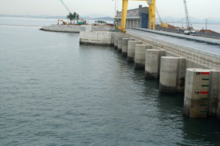Neddy Bate
Valued Senior Member
but your assessment of the pump is wrong and if you can not see that then we have little more to discuss..
Okay, you're right. If one side of the piston is the sealed off 'air' side, and the other side of the piston is the sealed off 'water' side, then it should work. But it's not because of the handle at the top, because that has equal pressure on both sides of the handle. It's because of the open port that lets the water pressure in to one side of the piston. I realise now that you never said the handle was the reason why, but I mistakenly thought that was your idea. Sorry.



